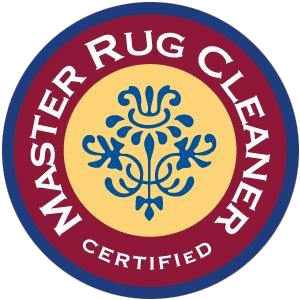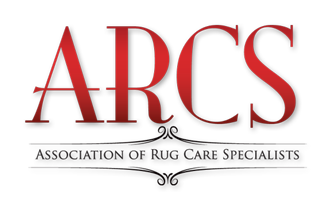Rug experts agree that in-plant rug cleaning is highly recommended for proper maintenance of Orientals and other loose-laid rugs. They should not be cleaned on location like synthetic, wall-to-wall carpet for many reasons:
- Rug fibers are very different from those found in residential and commercial broadloom carpet. There is far more natural fiber such as wool, cotton, silk and jute used in rugs than in broadloom carpet.
- Backings are very different, as natural foundation yarns are more prominent in rugs as opposed to separate synthetic backing fabrics for tufted carpet.
- Construction is different: woven constructions are most prevalent in area rugs, as opposed to tufting being the dominant construction in the broadloom market.
- Cleaning technology is different due to the potential for dye migration and fiber distortion.
As all professional carpet, upholstery and especially rug cleaners know, color migration is their worst nightmare. To avoid or prevent a rug from “bleeding” and being permanently damaged a true professional rug cleaner must be knowledgeable of and be able to perform minimum moisture cleaning methods in their rug cleaning operation.
All methods of cleaning begin with dry vacuuming for particle soil removal prior to cleaning. Several options are:
-
- upright vacuuming - Vacuum the rug’s face, back, face until particle soils are removed.
- “dusting” - Using a mechanical rug beater, or place the rug face down on a smooth surface and securely attach two centrifugal airmovers to each corner. Gentle flapping action allows soils to sift downward and out of the pile over time.
- compressed air “dusting” - Specialized tools may be used in conjunction with high volume compressed air at 110 psi and 100 cfm. Appropriate PPE (e.g., eye, respiratory protection) must be worn when air washing or compressed-air dusting rugs.
In unusual cases, vacuuming may be the only “safe” cleaning process you can use.
The following is a list of some of the minimum moisture methods I’ve used over the years to successfully clean rugs. All of these methods are recognized by the WoolSafe Organization when the cleaning solution has been tested and approved by WoolSafe (www.woolsafe.org/usa).
Damp Dusting – neutral detergent sprayed on a clean, absorbent towel. Hand-wipe or “dust” the surface of the rug. Repeat as needed.
Dry Solvent Cleaning (hand and machine) - dry solvents dissolve oily binders and dry solvent detergents suspend fine particle soils. Dry solvent rinse solutions flush suspended soil from the rug.
Absorbent Compound - absorbent carrier emulsified with detergent, solvents and moisture. The detergent emulsifies oily soils, defloculates particles; suspended soil is attracted to absorbent carrier; excess carrier with attracted soil is dry vacuum extracted.
Absorbent Pad or “Bonnet” - emulsified detergent in a water‑based carrier is spray applied to the rug; defloculation occurs; then a damp (H2O) cotton/rayon bonnet is "spin-buffed" over surface to "extract" soil. Caution: adequate lubrication is essential to prevent pile distortion.
Dry Foam – a high-foaming surfactant; neutral or with mild alkaline builder hand sponged or brush or machine application; detergent defloculates and emulsifies soil; drys to crystal; vacuumed from the rug along with attached soil.
Crystallizing or Encapsulating detergent or surfactant containing embrittling agents. Agitation of the pile with a twin-brush machine similar to the one used in the absorbent compound method or a twin or triple brush rotary shampoo machine. The crystals encapsulate the dirt particles, which are subsequently removed by thorough suction cleaning. Except for spotting there are no other cleaning agents.
Shampoo (Rotary) - foaming surfactant is fed onto a shower‑feed, nylon‑ bristled, rotary brush. The “shampoo” is created by agitation between brush head and rug’s pile. Defloculation occurs followed by wet vacuuming; embrittling agents cause shampoo to dry to a crystalline form.
No matter what method a rug cleaner chooses, the ultimate objective of professional rug cleaning is to remove the maximum of soil with the least amount of damage to the rug. Using minimum moisture cleaning methods will help achieve that goal.
[Ruth Travis holds a degree in Textiles from the University of Tennessee. She is the immediate past president of the IICRC, an IICRC-approved Senior Carpet Inspector, and an approved instructor in Rug Cleaning and Color Repair. She is a rug cleaning consultant with Chase Carpet and Rug Care in Denver, CO. She serves as the North American Director of the international WoolSafe Organization – www.woolsafe.org/usa.]




